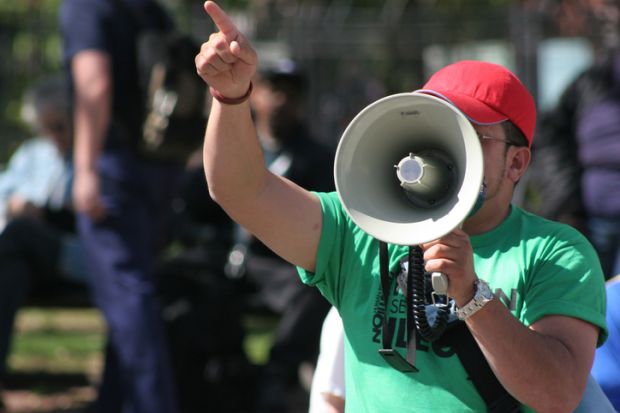While largely celebrated by US universities, Joe Biden’s election may complicate their finances by encouraging labour activism among low-paid teaching staff at the same time as institutions face tough economic challenges.
Among its likely actions, the Biden administration is expected to pick members of the National Labor Relations Board (NLRB) who would permit postgraduates at private institutions to form unions.
The union-friendly incoming US president also has been taking advice from Randi Weingarten, president of the American Federation of Teachers (AFT) – the largest union representing lecturers at US universities – and was reported to be considering naming her education secretary.
In an interview with Times Higher Education, Ms Weingarten cast aside speculation over joining the administration but made clear she expected increased labour activism on US college campuses.
“What you’re going to see is a lot more graduate workers organising again,” Ms Weingarten said.
Survey data earlier this year from the AFT illustrated the size of the overall problem. Responses from more than 3,000 contingent faculty found that a third earned less than $25,000 (£19,000) annually – below the federal poverty guideline for a family of four.
Many colleges, however, are also in a major financial bind. Public spending on higher education declined between 2008 and 2018 in 45 states.
Ms Weingarten acknowledged the financial realities, and urged the Biden administration to push ahead with its idea for creating dedicated federal support for colleges serving low-income students.
But without a basic level of public commitment from sector leaders, she warned, the US will “continue to have cyclical spiralling downward of our great universities”.
Private colleges and universities already have experienced a “massive increase” in faculty unionisation, according to the National Center for the Study of Collective Bargaining in Higher Education and the Professions, at the City University of New York (CUNY).
In a report on unionisation between 2013 and 2019, the centre found the number of bargaining units at private non-profit US institutions jumped more than 80 per cent to 145. Unionisation at public institutions increased about 9 per cent to 615 units.
The private sector growth was “largely attributable” to a decision by the NLRB late in the Obama administration to restore the collective bargaining rights of postgraduates, said William Herbert, executive director of the CUNY centre.
The NLRB under the Trump administration has been eager to reverse those rights. But several universities have voluntarily chosen to negotiate with their postgraduates, thereby preventing the NLRB under Trump from hearing a case that would let it bar such unions.
Private institutions haven’t been blocking the NLRB just to be kind, Ms Weingarten said. Instead, she said, it reflected their recognition that the bargaining table was a better place than a federal agency for resolving the tough problems they all face.
“The universities look at what is [in] their self-interest,” Ms Weingarten said. “I don’t see it as the university being nice or not nice.”
Register to continue
Why register?
- Registration is free and only takes a moment
- Once registered, you can read 3 articles a month
- Sign up for our newsletter
Subscribe
Or subscribe for unlimited access to:
- Unlimited access to news, views, insights & reviews
- Digital editions
- Digital access to THE’s university and college rankings analysis
Already registered or a current subscriber? Login






